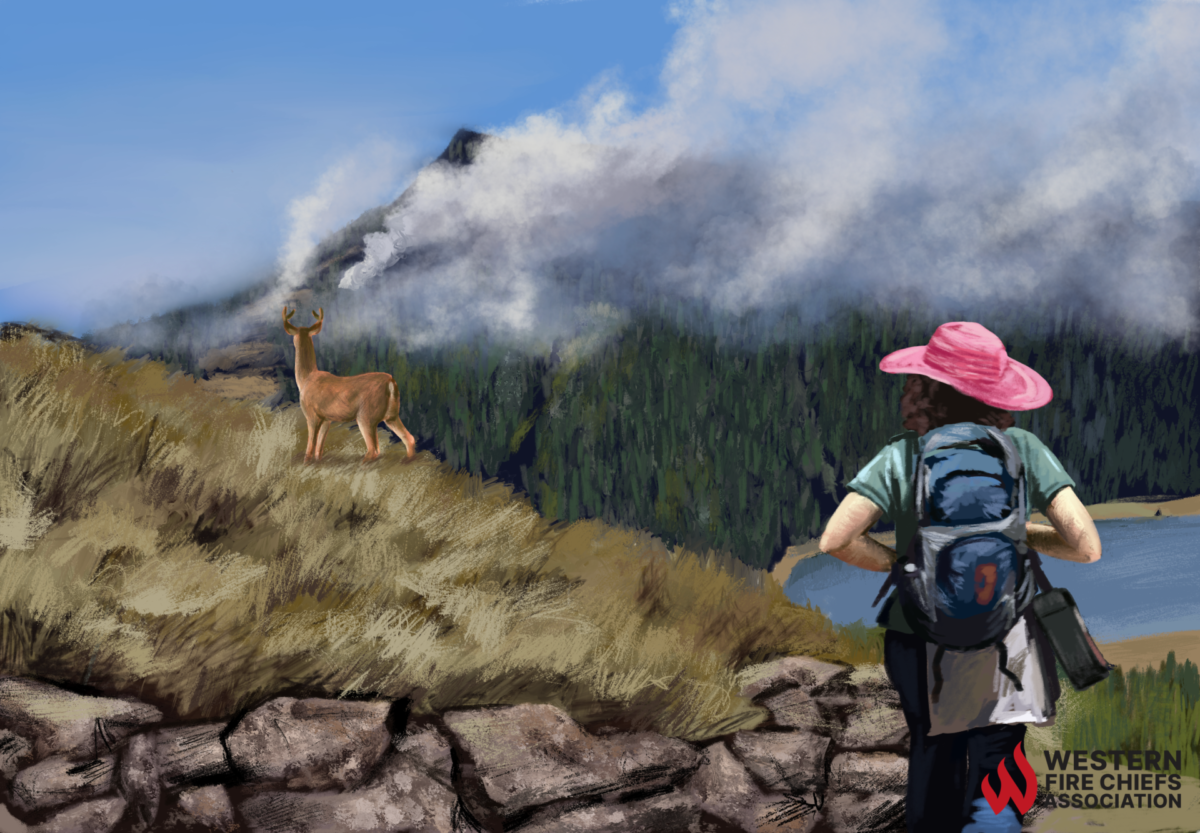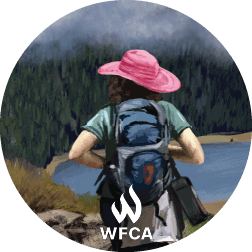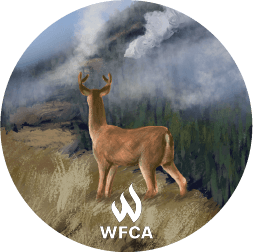Fire Pit Safety Tips
Stay safe around the campfire with tips from the Western Fire Chiefs Association. Learn essential precautions and practices for a worry-free outdoor campfire.
Gain an understanding of the effects wildfires can have on both humans and animals with expert guidance from the Western Fire Chiefs Association (WFCA).
Published:July 26, 2022
Edited:March 4, 2024

Gain an understanding of the effects wildfires can have on both humans and animals with expert guidance from the Western Fire Chiefs Association (WFCA).
Wildfires are a natural part of many landscapes, but what effects to do wildfires have on humans and animals? Over the past 50 years, wildfires have become more prevalent and destructive. Although states like California, Nevada, and Utah often see the greatest number of fires annually, fires can occur almost anywhere, including historically high-moisture regions like the Pacific Northwest.1
Wildfires can have many varied effects, both positive and negative. When human communities and individuals take action to prepare for wildfires, they minimize the potential for harm to all life forms.

As human communities spread into the wildland-urban interface (WUI), more people live in areas that are at high risk when fires occur. Even when people can escape direct harm of from fire, other damaging consequences are still possible:
Carbon monoxide is an odorless, colorless, toxic gas, which forms through the incomplete combustion of carbon-based fuel. While many people associate carbon monoxide with gas ovens or vehicle fumes, wildfires are also a contributing source.
When inhaled, carbon monoxide reduces the body’s ability to deliver oxygen through the bloodstream. Direct exposure to carbon monoxide can cause dizziness, nausea, headaches, loss of consciousness, and worsening of any existing heart conditions because not enough oxygen reaches the body’s vital organs.2
Prolonged inhalation of carbon monoxide can be fatal, with the highest risk for inhalation in close proximity to an active or smoldering fire.2 Firefighters use filters to protect themselves when battling a wildfire, while homeowners can invest in high-quality detectors that sound an alarm when the gas is present.
In addition to carbon monoxide, wildfires create smoke and small particulates that enter the atmosphere. Many of these particles are less than a third of the size of a single human hair.
Inhaling wildfire smoke causes inflammation in the body, and can be especially dangerous for anyone diagnosed with asthma or bronchitis. Individuals with existing heart or lung conditions may see their usual symptoms worsen or become more frequent.3 A study of mortality and fine particulate matter across 43 countries from January 2000 through December of 2016 found that over 33,500 deaths per year resulted from the effects of inhaling wildfire smoke.4
You do not need to live near a wildfire to experience these adverse effects. Smoke and particulate can travel thousands of miles.5 Therefore, it is important to prepare for wildfire smoke no matter where you live.
Like any natural disaster, wildfires can significantly impact a person’s mental health. Fires represent unpredictable danger with the potential to upend lives.
The mental health impacts of wildfire are not experienced equally. Economically depressed areas typically experience the greatest pollution burden from wildfires, compounding existing problems suffered by low-income populations. A 2017 study found that people who live in places where particulate matter exposure is more common have higher levels of psychological distress than those who live in less polluted areas.6
These effects are typically highest for those living or working in a wildfire’s direct path, but anyone can experience adverse outcomes because of the stresses that a fire creates.

Wildlife experience many of the same adverse effects as humans when wildfires approach. When animals are trapped or find themselves directly in the flames’ path, it can be a life-threatening situation.
Fires cause physical burns and smoke can also be deadly. Over 480 million non-human animals are estimated to have been killed during Australia’s 2020 brushfires, a figure which does not account for insects, bats, or frogs.7 However, direct physical harm is not the only type of injuries that wildfire can inflict.
When synthetic materials, such as plastics, burn during a fire, the resulting toxins can run off into the local water supply. The greatest impact of water pollution is felt by fish, aquatic and riparian plants, and marine mammals. The influx of toxins can poison any other animals that drink from or hunt in the affected water source.
Plants release high levels of phosphorus and nitrogen into the environment as they disintegrate during a wildfire. When it rains, these nutrients can also be washed into marine ecosystems. An excess of nutrients in water can trigger algae blooms, which decrease the availability of oxygen, suffocating fish and other water-breathing life forms.
When fire destroys the landscape, it also destroys the homes of many animals. Loss or contamination of shelter, water, and food are the immediate effects on wildlife following a fire. As such, animals are forced to move elsewhere in search of sustenance and new territory.
When animals travel, they experience higher risks of predator exposure, attacks from household pets, and vehicle strikes. Even if they establish themselves in a new territory, disputes can develop as the animals compete for whatever resources are available.
Many species return to the same places for nesting and breeding each year. If a wildfire destroys that area, recovery can be slow. For example, it can take several years for some animal populations to recover after missing a single breeding season.
The best thing you can do to minimize the negative health effects of wildfires is to become aware of your surroundings. That includes any forests and open fields where fuel for a fire exists. Knowing which bodies of water could be impacted is also helpful information to have.
Learn about local wildlife and consult with local officials about how you can reduce the negative impact of wildfires on the people and animals in your community.
If a wildfire occurs, keep your pets inside or leashed on your property. Having a safe space to escape will make it easier for animals to flee the affected area. Fires can cause animals to travel long distances to find safety, so watch for them near roads and highways.
People living in urban areas may see more animals than normal since they are escaping a fire. If you encounter an injured animal, try contacting local authorities before intervening. Experienced wildlife handlers can provide direct assistance or tell you how to deliver the needed help in that situation. Although humans often have good intentions, intervening sometimes causes further injury.
Some injured animals may lash out at humans, amplifying the potential risks involved with the encounter.
Local communities can also help animal populations by performing surveys and risk assessments for species in the area. Supporting conservation efforts and spreading knowledge of local wildlife within your community makes it easier to provide help if a wildfire occurs.
Humans and other animals are more likely to survive wildfires when proactive plans are made to escape, support, and protect life during a disaster. With the frequency and intensity of wildfires growing, the best time to become educated about the effects of wildfire on humans and wildlife is today!
Stay safe around the campfire with tips from the Western Fire Chiefs Association. Learn essential precautions and practices for a worry-free outdoor campfire.
Discover essential firework safety tips to ensure a dazzling display without accidents. Learn how to celebrate responsibly with expert guidance from WFCA.
Explore the role of AI in wildfire prediction with guidance from the WFCA. Learn how advanced algorithms and data analytics enhance early detection and response.